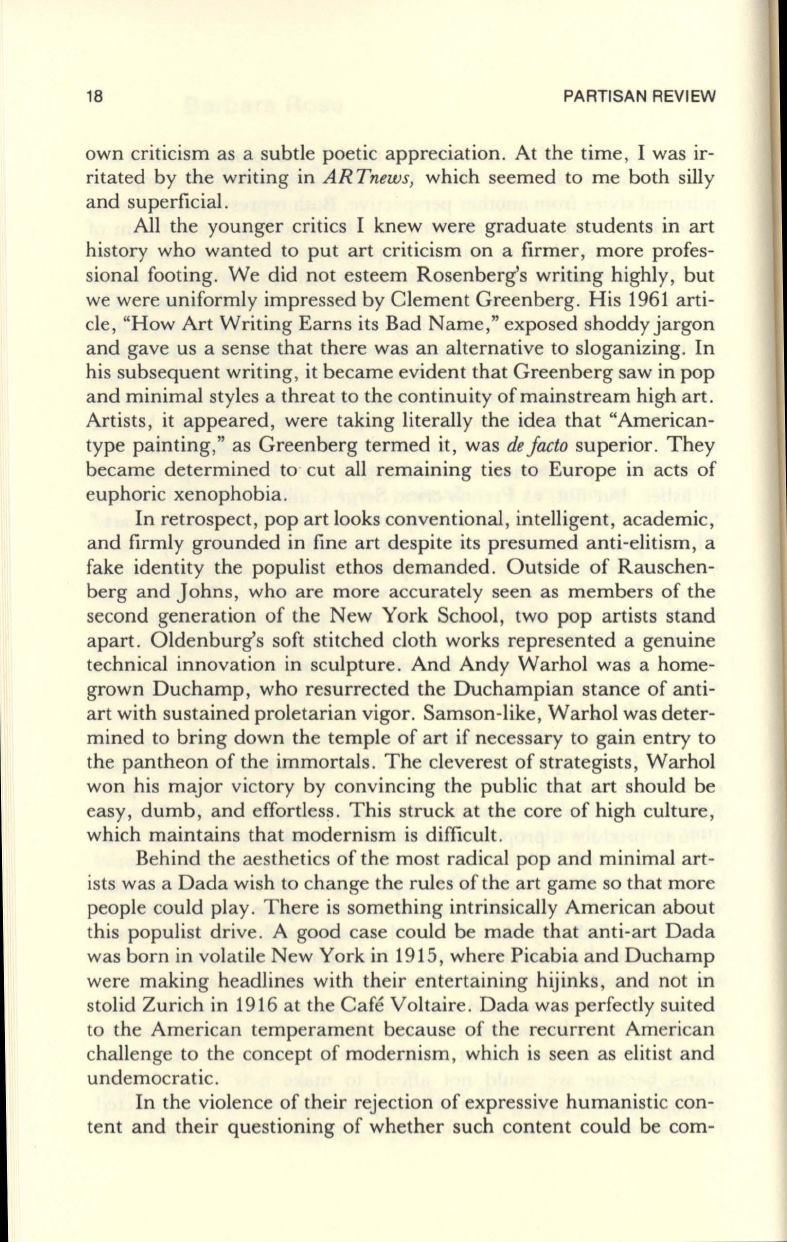
18
PARTISAN REVIEW
own criticism as a subtle poetic appreciation. At the time, I was ir–
ritated by the writing in
ARTnews,
which seemed to me both silly
and superficial.
All the younger critics I knew were graduate students in art
history who wanted to put art criticism on a firmer, more profes–
sional footing. We did not esteem Rosenberg's writing highly, but
we were uniformly impressed by Clement Greenberg. His 1961 arti–
cle, "How Art Writing Earns its Bad Name," exposed shoddy jargon
and gave us a sense that there was an alternative to sloganizing. In
his subsequent writing, it became evident that Greenberg saw in pop
and minimal styles a threat to the continuity of mainstream high art.
Artists, it appeared, were taking literally the idea that "American–
type painting," as Greenberg termed it, was
de facto
superior. They
became determined to· cut all remaining ties to Europe in acts of
euphoric xenophobia.
In retrospect, pop art looks conventional, intelligent, academic,
and firmly grounded in fine art despite its presumed anti-elitism, a
fake identity the populist ethos demanded. Outside of Rauschen–
berg and Johns, who are more accurately seen as members of the
second generation of the New York School, two pop artists stand
apart. Oldenburg's soft stitched cloth works represented a genuine
technical innovation in sculpture. And Andy Warhol was a home–
grown Duchamp, who resurrected the Duchampian stance of anti–
art with sustained proletarian vigor. Samson-like, Warhol was deter–
mined to bring down the temple of art if necessary to gain entry to
the pantheon of the immortals. The cleverest of strategists, Warhol
won his major victory by convincing the public that art should be
easy, dumb, and effortless. This struck at the core of high culture,
which maintains that modernism is difficult.
Behind the aesthetics of the most radical pop and minimal art–
ists was a Dada wish to change the rules of the art game so that more
people could play. There is something intrinsically American about
this populist drive. A good case could be made that anti-art Dada
was born in volatile New York in 1915, where Picabia and Duchamp
were making headlines with their entertaining hijinks, and not in
stolid Zurich in 1916 at the Cafe Voltaire. Dada was perfectly suited
to the American temperament because of the recurrent American
challenge to the concept of modernism, which is seen as elitist and
undemocratic.
In the violence of their rejection of expressive humanistic con–
tent and their questioning of whether such content could be com-


